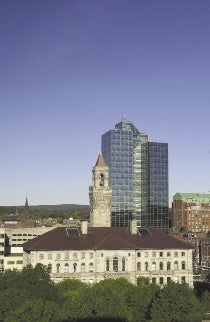A study commissioned by the Worcester Regional Chamber of Commerce says the city is in a strong position to attract new companies in the manufacturing, health, education, and science and technology industries because of its growing population and more innovation-based “industry clusters” in the area. The 38-page report, prepared by Anderson Strategic Advisors, calls Greater Worcester “an economic engine” whose manufacturing past has evolved while it grows “clusters of innovation” for the future.
Why was the report done?
Not long after Timothy Murray resigned as lieutenant governor to take on the chamber presidency last year, the chamber engaged Anderson to help it strategize how to expand the region’s economic base, helping to support the chamber’s strategy of “recruit, retain, incubate.”
What did the report look at?
Anderson examined U.S. Census data in search of demographic and economic figures and trends. It especially looked at changes in the Worcester area from 2000 to 2010, specifically employment levels in the industries where people worked, educational attainment of city residents and how the region stacks up against the Boston area and the state as a whole.
What did it find?
While it “confirmed that we have a lot of existing assets to work with in our region,” Murray said, the study said the chamber could do more.
Such as?
The study recommended that the chamber adopt three strategies to improve the region’s business friendliness and market its value to businesses considering a move to the area. Those strategies include: Expedite municipal permitting, push tax incentives, and network and attend trade shows.
What’s working for Worcester and the towns around it?
The study cited five areas the chamber should emphasize to define the region’s value: growth in population between 2000 and 2010; lower real estate and workforce costs; Worcester’s location relative to major airports in Boston, Hartford, Providence and Manchester; a higher concentration of people up to age 14 than Boston or the state as a whole; and a thriving innovation economy, with 2.4 times as many people employed in manufacturing than in Suffolk County.

